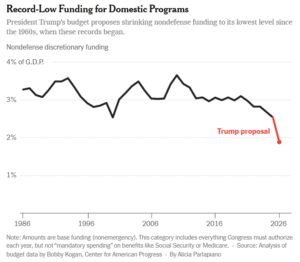Back during Covid, over 38,000 adults volunteered to participate in a “challenge” clinical trial of the new vaccines, but such trials were not allowed. In a challenge trial each participant receives the vaccine and then is exposed to the disease. Phase 3 trials for efficacy can be completed much more quickly, with many fewer participants, and at much lower costs, if the trials are “challenge” trials.
We allow people the freedom to dangerous actions for fun or excitement, or to help humanity, like Tim Friede (below) injecting snake venom and letting snakes bite him. Why then did we not allow challenge trials with the Covid vaccine?
Note on another issue, that the researchers are planning in their next step to test their antivenom on dogs who are bitten by snakes. This is a good example of my ideal use of dogs in medical research–where the trial aims at benefits for both the humans AND the dogs.
(p. A1) Over nearly 18 years, the man, Tim Friede, 57, injected himself with more than 650 carefully calibrated, escalating doses of venom to build his immunity to 16 deadly snake species. He also allowed the snakes — mostly one at a time, but sometimes two, . . . — to sink their sharp fangs into him about 200 times.
This bit of daredevilry (one name for it) may now help to solve a dire global health problem. More than 600 species of venomous snakes roam the earth, biting as many as 2.7 million people, killing about 120,000 people and maiming 400,000 others — numbers thought to be vast underestimates.
In Mr. Friede’s blood, scientists say they have identified antibodies that are capable of neutralizing the venom of multiple snake (p. A19) species, a step toward creating a universal antivenom, they reported on Friday [May 2, 2025] in the journal Cell.
“I’m really proud that I can do something in life for humanity, to make a difference for people that are 8,000 miles away, that I’m never going to meet, never going to talk to, never going to see, probably,” said Mr. Friede, who lives in Two Rivers, Wis., where venomous snakes are not much of a threat.
. . .
“This is a bigger problem than the first world realizes,” said Jacob Glanville, founder and chief executive of Centivax, a company that aims to produce broad-spectrum vaccines, and lead author on the study.
Dr. Glanville and his colleagues found that two powerful antibodies from Mr. Freide’s blood, when combined with a drug that blocks neurotoxins, protected mice from the venom of 19 deadly snake species of a large family found in different geographical regions.
This is an extraordinary feat, according to experts not involved in the work. Most antivenoms can counter the venom from just one or a few related snake species from one region.
The study suggests that cocktails of antitoxins may successfully prevent deaths and injuries from all snake families, said Nicholas Casewell, a researcher at the Liverpool School of Tropical Medicine in England.
. . .
There were other mishaps — accidental bites, anaphylactic shocks, hives, blackouts. Mr. Friede describes himself as a nondegree scientist, but “there’s no college in the world that can teach you how to do it,” he said. “I was doing it on my own as best I could.”
Two teams of scientists sampled Mr. Friede’s blood over the years, but neither project led anywhere. By the time he met Dr. Glanville, in 2017, he was nearly ready to give up.
Dr. Glanville had been pursuing what scientists call broadly acting antibodies as the basis for universal vaccines against viruses. He grew up in a Maya village in the Guatemala highlands, and became intrigued by the possibility of using the same approach for universal antivenom.
. . .
The researchers next plan to test the treatment in Australia in any dogs that are brought into veterinary clinics for snakebites. They are also hoping to identify another component, perhaps also from Mr. Friede’s blood, that would extend full protection to all 19 snake species that were subjects of the research.
Mr. Friede himself is done now, however. His last bite was in November 2018, from a water cobra. He was divorced — his wife and children had moved out. “Well, that’s it, enough is enough,” he recalled thinking.
He misses the snakes, he said, but not the painful bites. “I’ll probably get back into it in the future,” he said. “But for right now, I’m happy where things are at.”
For the full story see:
Apoorva Mandavilli. “Man of 200 Snake Bites May Be the Antivenom.” The New York Times (Saturday, May 3, 2025): A1 & A19.
(Note: ellipses, and bracketed date, added.)
(Note: the online version of the story has the date May 2, 2025, and has the title “Universal Antivenom May Grow Out of Man Who Let Snakes Bite Him 200 Times.”)
The academic article in the journal Cell mentioned above is:
Glanville, Jacob, Mark Bellin, Sergei Pletnev, Baoshan Zhang, Joel Christian Andrade, Sangil Kim, David Tsao, Raffaello Verardi, Rishi Bedi, Sindy Liao, Raymond Newland, Nicholas L. Bayless, Sawsan Youssef, Ena S. Tully, Tatsiana Bylund, Sujeong Kim, Hannah Hirou, Tracy Liu, and Peter D. Kwong. “Snake Venom Protection by a Cocktail of Varespladib and Broadly Neutralizing Human Antibodies.” Cell 188 (2025): 1-18.


